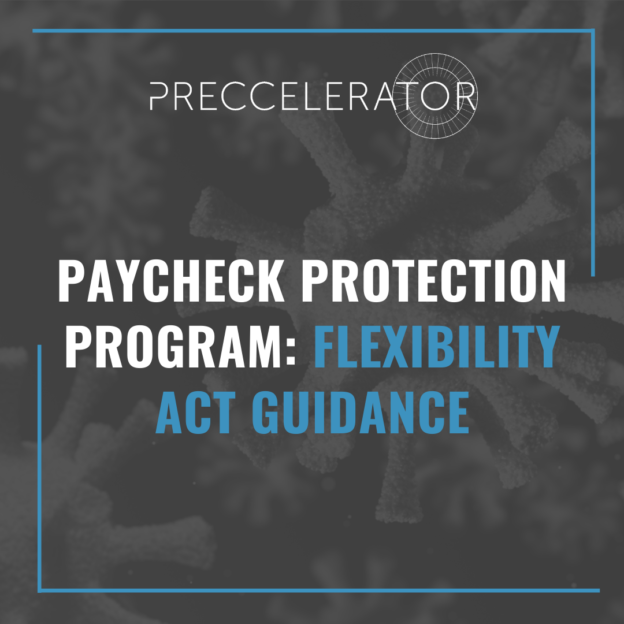
PPP Flexibility Act Guidance
On May 28, 2020, the U.S. House of Representatives approved the Paycheck Protection Flexibility Act to give more time and flexibility to employers who receive or have received forgivable loans under the Small Business Administration’s Paycheck Protection Program (“PPP”). On June 3, 2020, the Act passed the Senate by unanimous consent. The Act was signed and put into effect by President Trump on June 5, 2020.
Period eligible for loan forgiveness extended
Critically, the PPP Flexibility Act extends the time PPP recipients have to spend their funds and still be entitled to receive forgiveness of the loan from eight weeks to the earlier of 24 weeks or December 31, 2020. However, borrowers that have received their loans prior to the PPP Flexibility Act’s enactment may still elect to use their funds over the original 8-week period and the related obligation to maintain payroll levels only through June 30, 2020. Borrowers using the new covered period will be obligated to maintain payroll levels for an extra 16 weeks.
Exemption for reduced forgiveness amounts
Relatedly, the Act creates a new forgiveness exemption based on employee availability during the period from February 15, 2020 through December 31, 2020. Under this provision, loan forgiveness will be determined without regard to a proportional reduction in the number of full-time equivalent employees if a borrower documents in good faith both the inability to rehire individuals who were employees on February 15, 2020 and the inability to hire similarly qualified employees for unfilled positions on or before December 31, 2020. This exemption also extends to borrowers whom in good faith are able to document the inability to return to the same level of business activity at which the borrower operated on or before February 15, 2020, due to compliance with regulatory standards for sanitation, social distancing, or any other worker or customer safety requirement related to COVID-19 and promulgated between March 1, 2020 and December 31, 2020 (the Act specifically identifies guidance issued by Department of Health and Human Services, the Centers for Disease Control and Prevention, and the Occupational Safety and Health Administration).
75/25 rule now 60/40
Another significant provision from the Act lowers the portion of PPP funds borrowers must spend on payroll costs to qualify for full loan forgiveness from 75% to 60%. This means that 40% of the loan may now be spent on covered non-payroll costs (i.e., rent, mortgage interest and utilities), as opposed to the prior 25% requirement.
Deferral period extended
The Act also extends the existing 6-month loan payment deferral period until the date on which the amount of forgiveness determined is remitted to the lender. Further, if a borrower fails to apply for forgiveness within 10 months of the last day of the covered period, payments of principal, interest, and fees will begin no earlier than 10 months after the last day of such covered period.
New minimum maturity date
The Act also extends the existing 6-month loan payment deferral period until the date on which the amount of forgiveness determined is remitted to the lender. Further, if a borrower fails to apply for forgiveness within 10 months of the last day of the covered period, payments of principal, interest, and fees will begin no earlier than 10 months after the last day of such covered period.
Further, the Act also creates a new five-year minimum maturity date (applicable only to post-enactment loans) and provides that nothing shall be construed to limit lenders and pre-enactment borrowers from mutually agreeing to modify the maturity terms to conform with this change.
Adjustment to delay of employer payroll taxes
Lastly, the Act now permits borrowers whose loans were forgiven in whole or in part to delay the payment of employer payroll taxes until December 31, 2021 (with respect to up to 50% of the amounts due) and December 31, 2022 (with respect to the remaining amounts due up to 50%). Borrowers who received forgiveness were previously prohibited from taking advantage of this benefit.
Stubbs Alderton Authors:
For more information on worker’s rights and business liability, visit our COVID-19 Preccelerator Resource Center
https://preccelerator.com/category/covid-19-resources/



